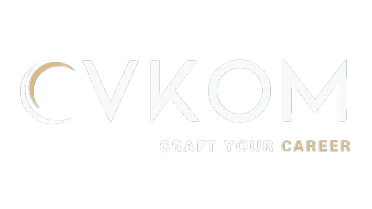How to
Use a Cover Letter to Address Weaknesses in Your Resume
Your cover letter is not just a tool
to highlight your strengths; it can also be a strategic opportunity to address
potential weaknesses or gaps in your resume. By proactively explaining
inconsistencies, employment gaps, or career transitions, you can frame these
issues in a positive light and demonstrate your problem-solving skills and
self-awareness. Here's how to effectively use your cover letter to address
weaknesses without drawing undue attention to them.
Common
Resume Weaknesses You May Need to Address
- Employment Gaps:
Periods where you were unemployed or out of the workforce.
- Career Transitions:
Moving between industries or professions.
- Lack of Specific Experience: Missing certain qualifications or technical skills
listed in the job description.
- Job Hopping:
Short stints at multiple jobs, which might raise concerns about stability.
- Overqualification or Underqualification: Either exceeding or not fully meeting the role’s
requirements.
Why
Use a Cover Letter to Address Weaknesses?
- Provides Context:
Explains circumstances behind gaps, transitions, or other potential red
flags.
- Demonstrates Proactivity: Shows you recognize potential concerns and have taken
steps to address them.
- Turns Weaknesses into Strengths: Positions challenges as opportunities for growth or
learning.
- Builds Trust:
Acknowledging challenges honestly can make you appear more credible.
How
to Address Weaknesses in a Cover Letter
1.
Acknowledge the Weakness Briefly
Example (Employment Gap):
"After a two-year career break to focus on family responsibilities, I am
excited to return to my professional career with renewed energy and a stronger
skill set."
2.
Emphasize What You Learned
Turn the weakness into a strength by
highlighting the skills or experiences gained during the period in question.
Example (Career Transition):
"My experience transitioning from a teaching role to corporate training
has strengthened my ability to engage diverse audiences and adapt complex
material to meet specific needs."
3.
Highlight Relevant Skills and Achievements
Example (Lack of Experience):
"Although I do not have direct experience in digital marketing, my
background in content creation and project management equips me with
transferable skills, such as audience analysis and deadline-driven execution,
that align with the requirements of this role."
4.
Use Positive Language
Avoid apologetic or negative tones.
Frame the situation in a way that highlights your growth, adaptability, and
problem-solving abilities.
Example (Job Hopping):
"While my career journey includes several short-term roles, each position
provided valuable insights and allowed me to quickly adapt to new environments,
ultimately strengthening my ability to thrive in fast-paced, dynamic
workplaces."
5.
Focus on the Future
Example (Underqualification):
"I am eager to bring my proven leadership and analytical skills to your
team while continuing to grow and develop in areas like data visualization to
meet the evolving needs of your organization."
Cover
Letter Examples
Example
1: Addressing an Employment Gap
Dear [Hiring Manager’s Name],
After taking a two-year career break
to focus on caregiving responsibilities, I am eager to bring my extensive
marketing expertise back to the professional world. During this time, I stayed
connected to industry trends by completing certifications in digital marketing
and analytics, which have sharpened my technical skills and expanded my
knowledge of emerging tools like Google Ads and HubSpot.
In my previous role as a Marketing
Manager at XYZ Agency, I increased campaign ROI by 25% through data-driven
strategies. I am excited about the opportunity to contribute these skills to
[Company Name], and I am confident my recent upskilling will bring additional
value to your team.
Thank you for considering my
application. I look forward to the opportunity to discuss how my experience
aligns with your needs.
Sincerely,
[Your Name]
Example
2: Addressing a Career Transition
Dear [Hiring Manager’s Name],
With a strong background in
education and a recent certification in instructional design, I am excited to
transition into a role as a Corporate Trainer at [Company Name]. My 10+ years
as a high school teacher honed my ability to engage diverse audiences, develop
tailored learning materials, and assess outcomes—skills that align seamlessly
with corporate training initiatives.
While my career began in education,
I have actively pursued opportunities to bridge into corporate training,
including leading workshops for local businesses and completing coursework in
adult learning methodologies. I am confident that my unique blend of experience
and passion for professional development makes me a strong candidate for this
position.
Thank you for considering my
application. I would welcome the opportunity to discuss how I can contribute to
your team.
Sincerely,
[Your Name]
Example
3: Addressing Job Hopping
Dear [Hiring Manager’s Name],
Over the past few years, I have
worked in various roles that have provided me with diverse experiences and
honed my adaptability and problem-solving skills. While these roles were
relatively short-term, each position allowed me to contribute to key projects,
such as improving customer satisfaction rates by 20% at XYZ Corp and
streamlining operations at ABC Inc, reducing costs by 15%.
I am now seeking a long-term
opportunity where I can leverage this breadth of experience to make a
meaningful impact. [Company Name]’s focus on innovation and collaboration
aligns perfectly with my professional goals, and I am excited about the
possibility of contributing to your success.
Thank you for considering my
application. I look forward to the opportunity to discuss how my skills align
with your needs.
Sincerely,
[Your Name]
Dos
and Don’ts
Dos:
- Be Honest: Provide a clear and concise explanation for the issue.
- Stay Positive:
Focus on what you’ve learned or how you’ve grown.
- Highlight Transferable Skills: Show how your experiences apply to the role.
- Emphasize Your Fit:
Redirect attention to your qualifications and enthusiasm for the position.
Don’ts:
- Over-Apologize:
Avoid excessive justification or negative language.
- Dwell on Weaknesses:
Keep the explanation brief and shift focus to your strengths.
- Lie or Exaggerate:
Always provide truthful explanations.
Why
Choose CVKOM for Cover Letter Assistance?
At CVKOM, we specialize in crafting personalized cover letters that address weaknesses while highlighting strengths. Our platform offers:
- Tailored Templates:
Designed to address gaps and transitions effectively.
- AI-Powered Suggestions: Provide strategies for turning weaknesses into
strengths.
- Professional Proofreading: Ensure your cover letter is polished and impactful.
- ATS Optimization:
Maximize your chances of reaching the hiring manager.
Conclusion
Your cover letter is a powerful tool
to address potential weaknesses in your resume while showcasing your strengths
and enthusiasm for the role. By framing challenges as opportunities for growth,
using positive language, and focusing on your qualifications, you can turn
potential red flags into assets.
Let CVKOM help you craft a
compelling cover letter that opens doors to your next opportunity—where
challenges become stepping stones to success!






